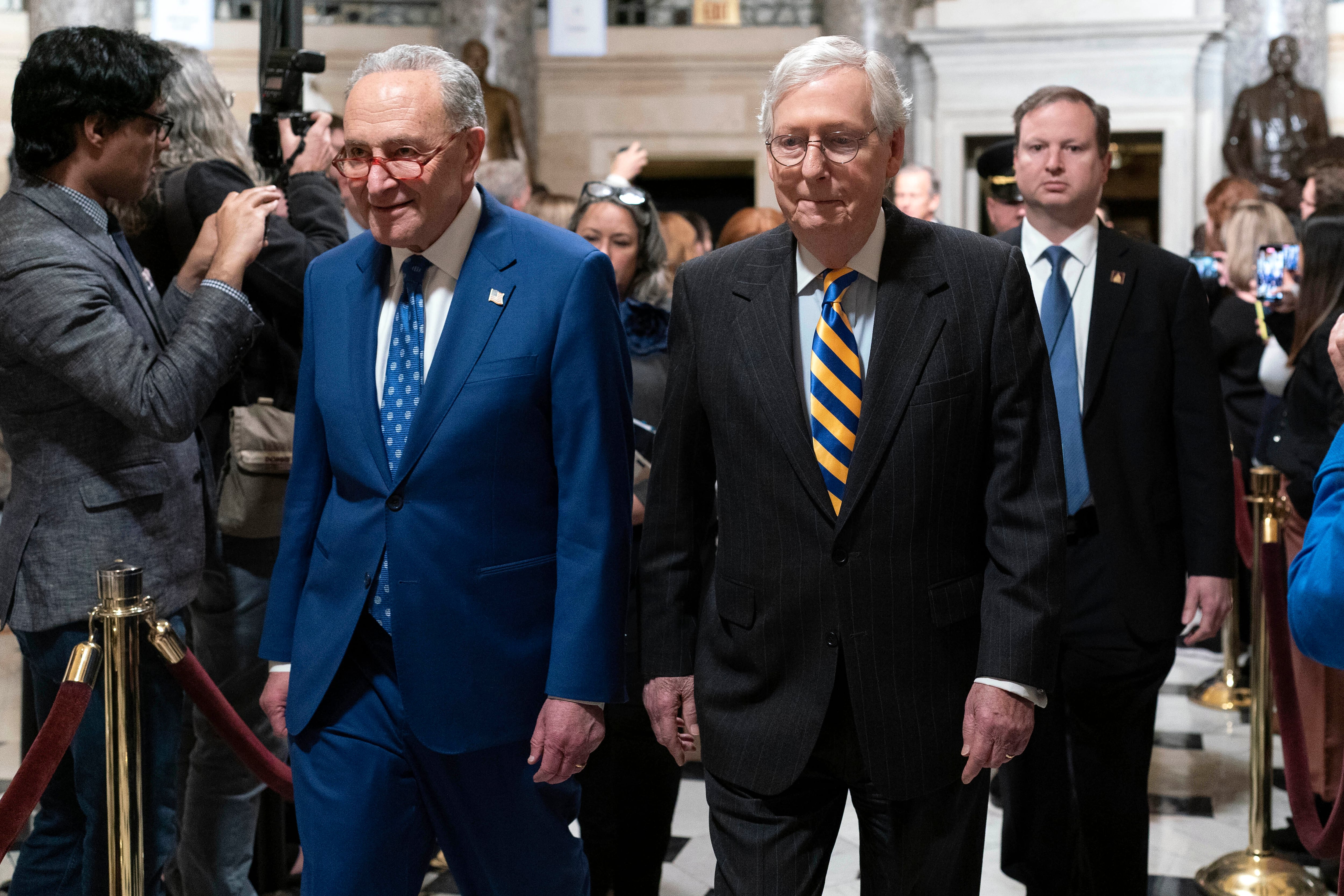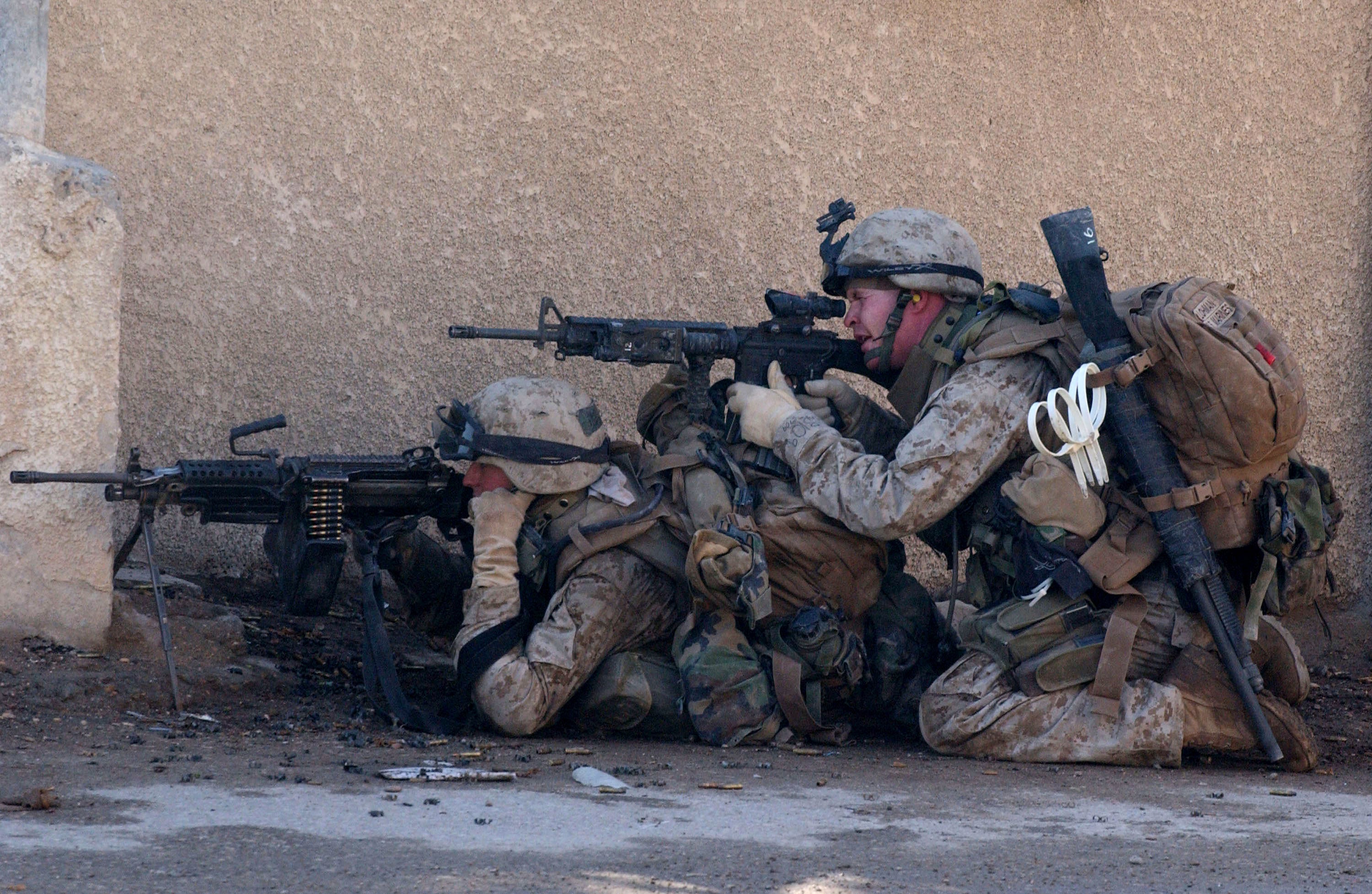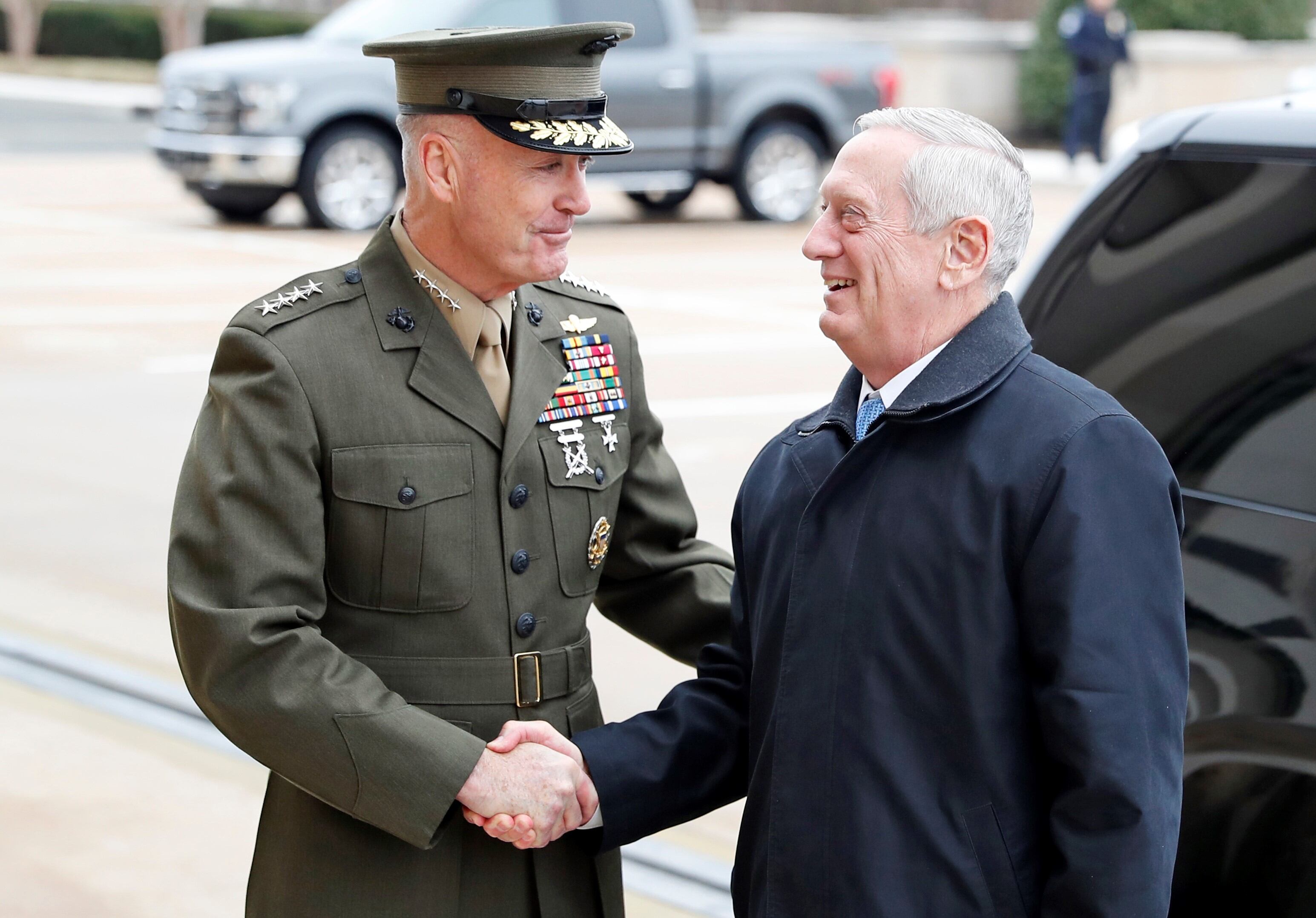Two decades ago, as the United States flowed forces across the globe to Iraq, key leaders in the Marine Corps, Navy and Coast Guard would see their futures forever changed by what happened next.
Twenty years later, the world now marks the anniversary of the launch of Operation Iraqi Freedom, the U.S.-led invasion of Iraq in March 2003 that began the protracted armed conflict.
Troops across the Marine Corps, Navy and Coast Guard worked closely alongside their fellow service members in the opening of the prolonged war, which ended in December 2011. From the initial invasion, to a prisoner of war rescue operation, to the Battle of Baghdad, which saw Marines famously topple the statue of Iraqi dictator Saddam Hussein, troops throughout the sea services played a lead role in the first weeks of the conflict, and beyond.
Marine Corps officers Gen. James Mattis and Gen. Joseph Dunford are some of the most prominent Iraq invasion veterans, but others who deployed overseas also flourished in smaller, no less important ways, earning promotions to higher titles and command positions.
“The military is all about teamwork,” Mattis wrote in his 2019 memoir, though his rise through the ranks is often credited not only to the troops he worked with, but his own abilities to command.
This brief look at the individuals who made professional headway with the invasion explores the role they played in the conflict and how it shaped their military careers.
RELATED

A Marine called ‘CHAOS’
General James Mattis enjoyed numerous prominent positions overseeing influential commands throughout his lifelong career as a Marine, from 1st Marine Expeditionary Force, to U.S. Joint Forces Command to U.S. Central Command.
But before Mattis, call sign “Chaos,” took on any of those roles, and before he became Secretary of Defense in 2017, the popular Marine general earned his reputation for leading troops during Operation Iraqi Freedom.
For commanders in Iraq such as Mattis, their “performance was so public, it clearly launched them to the highest levels,” retired Marine Corps Col. Mark Cancian, a senior adviser at the Center for Strategic and International Studies, told Military Times.
After leading forces in late 2001 during the invasion of Afghanistan, Mattis took command of troops with the 1st Marine Division. At one point, he and his fellow officers used thousands of toy Lego blocks to represent units in rehearsal drills to visualize their imminent ground invasion of Iraq.
“Mattis was made for this both intellectually and professionally, but also he was quite a showman,” added Cancian, who served on two deployments in Iraq with combat assessment teams.
Colorful episodes — such as when Mattis reportedly told Iraqi leaders, “If you f--- with me, I’ll kill you all” — earned the general the nickname “Mad Dog,” though it is not one that he is fond of.
Just weeks into the invasion, Mattis notably dismissed the commander of a regimental combat team, but the key role he played fighting the Iraqi insurgency during the April 2004 assault on Fallujah, one of the bloodiest campaigns during the Iraq war, marked a defining moment in the general’s career. Although he later disclosed in his book that he did not approve of either starting or stopping that operation, it nonetheless sent Mattis into the national spotlight.
RELATED

‘Fighting Joe’ becomes Chairman of the Joint Chiefs
Prior to serving as Commandant of the Marine Corps, and later the second Marine to become Chairman of the Joint Chiefs of staff, now retired General Joseph Dunford made a name for himself during the invasion of Iraq.
Under the command of Mattis, then Col. Dunford led the 5th Marine Regiment during the invasion, some of the first major ground combat forces in Iraq, and later advanced to serve as assistant commander of the 1st Marine Division.
He reportedly earned the nickname “Fighting Joe” for his actions during the early days of the invasion, a moniker he does not use, but joked during a 2015 congressional hearing that it may be utilized by his wife.
Quickly moving up from a one-star general to a four star after Iraq, he went on to command all U.S. and allied troops in Afghanistan as the head of the International Security Assistance Force.
Many of Dunford’s peers consider his wartime experience as a qualifier that granted him more influential, higher-level assignments.
Retired Marine Gen. Peter Pace, the first Marine to serve as chairman of the Joint Chiefs in 2005, previously told Marine Corps Times that Dunford’s operational experience as a commander of ground troops in wartime would give him wisdom and perspective in guiding decisions about when and how to wield military power.
“For General Dunford, with recent experience in this current war, it’s going to serve him extremely well,” Pace said ahead of Dunford becoming chairman.
Creating Commandant Conway
Now retired Gen. James Conway, Commandant of the Marine Corps from November 2006 to October 2010, was also advancing well in his military career ahead of the invasion of Iraq. Commissioned in 1970 as an infantry officer, the Marine served in various company grade assignments before later leading 1st Marine Division.
Just ahead of the invasion, Conway was promoted to command 1st Marine Expeditionary Force.
During the MEF’s first deployment in support of Operation Iraqi Freedom, he oversaw thousands of service members through major battles in An Nasiriyah, Al Kut, Baghdad and Tikrit, according to a Marine Corps release.
“Although Marines don’t normally do nation-building, they will tell you that once given the mission, nobody can do it better,” Conway said in the 2004 release when taking command of troops in western Iraq.
Shortly after his two combat tours in Iraq, and a brief stint with the Joint Staff, Conway was promoted to oversee the entire Marine Corps.
Other Marines who deployed during the Iraq invasion also advanced in their careers, according to retired Marine Lt. Col. Frank Hoffman, a research fellow at National Defense University and former senior DoD official.
Hoffman shared in an interview with Military Times that for individuals like Marine Corps Maj. Gen. Julian Alford, Lt. Gen. William Jurney, Lt. Gen. Michael Groen and Maj. Gen. William F. Mullen III, he saw a correlation between their creativity during combat operations in Iraq and their rise through the ranks.
Across the other sea services
The Nimitz-class aircraft carrier Abraham Lincoln and its carrier battle group played a pivotal role for the Navy during the invasion as home to various warplanes that launched early airstrikes against Iraq.
On May 1, 2003, President George W. Bush stood aboard the carrier in front of a sign reading “Mission Accomplished,” declaring the end of major combat operations in Iraq.
Adm. William J. Fallon served as Vice Chief of Naval Operations during the initial invasion and transitioned to become commander of the U.S. Fleet Forces Command and U.S. Atlantic Fleet only months later.
The Coast Guard also took on various combat missions during Operation Iraqi Freedom, from escort duties to Port Security Unit operations, in its largest overseas deployment since the Vietnam War, according to a history conducted by the nonprofit Center for Naval Analyses.
Few of those who commanded cutters during the early stages of the conflict, however, advanced to the upper echelons of the maritime security service.
There are some exceptions. Officers such as Capt. Sean MacKenzie, who led the island-class patrol boat Adak on deployment for the invasion, later became commander of the Coast Guard’s Anchorage, Alaska sector.
Jonathan is a staff writer and editor of the Early Bird Brief newsletter for Military Times. Follow him on Twitter @lehrfeld_media





